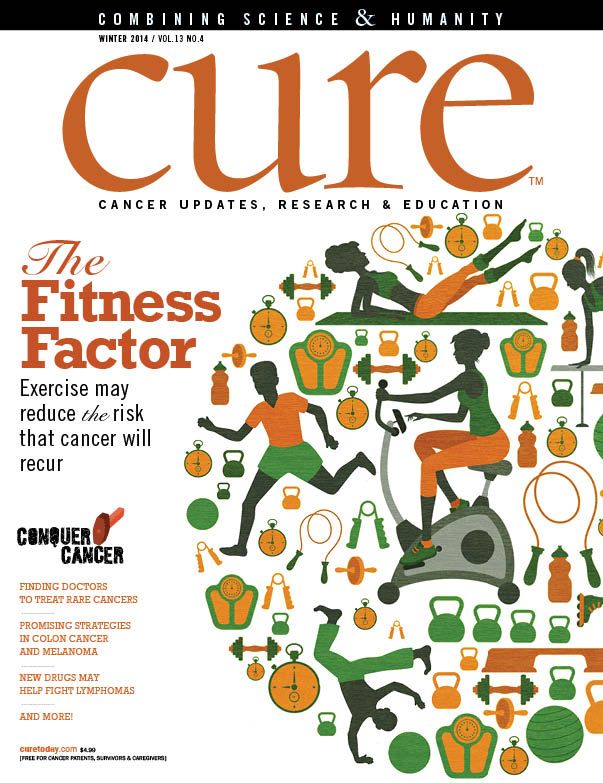Publication
Article
CURE
Updates from the European Society for Medical Oncology
Author(s):
The annual meeting of the European Society for Medical Oncology (ESMO) was held in September to discuss the latest data on critical issues in cancer treatment, diagnostics, prevention, supportive care and more.
The annual meeting of the European Society for Medical Oncology (ESMO) was held in September, bringing nearly 20,000 cancer researchers, physicians and industry professionals to Madrid, Spain, to discuss the latest data on critical issues in cancer treatment, diagnostics, prevention, supportive care and more. Here we offer a sampling of the studies that were presented.
Perjeta Shows Dramatic Survival Boost in Patients with HER2-Positive Breast Cancer
The development of Herceptin (trastuzumab) was a game changer for people with HER2- positive breast cancer. Given with or after chemotherapy, Herceptin, approved by the U.S. Food and Drug Administration (FDA) in 1998, reduces recurrence rates by half in specific types of early HER2-positive breast cancer and by one-third in metastatic HER2- positive breast cancer.
Now, a study has demonstrated that adding a second monoclonal antibody—Perjeta (pertuzumab)—to Herceptin and chemotherapy can further reduce the risk of death by about a third in patients with advanced HER2-positive breast cancer.
The information was reported in updated results from the phase 3 CLEOPATRA study. After a four-year follow- up, the triple combination extended survival by nearly 16 months over the standard treatment of Herceptin and chemotherapy (56.5 months compared with 40.8 months, respectively).
“We haven’t ever seen that in any other trial of metastatic breast cancer,” said one of CLEOPATRA’s lead researchers, medical oncologist Sandra Swain. Progression-free survival also improved with the addition of Perjeta.
Perjeta was approved in 2012 for patients with metastatic HER2-positive breast cancer, and was later granted accelerated approval for early-stage cancer before surgery. Reported side effects included rash, diarrhea and low blood counts.
“Based upon the study results, I would recommend personally that all patients have an opportunity to get dual-antibody therapy—pertuzumab and trastuzumab,” Swain concluded.
Nivolumab Beats Chemo as Second-Line Treatment for Advanced Melanoma
An investigational immunotherapy may be more effective than chemotherapy in patients with metastatic melanoma, according to the results of a phase 3 study.
Nivolumab was found to delay tumor growth when compared with chemotherapy in patients with metastatic melanoma. The immune checkpoint inhibitor antibody targets the PD-1 receptor of certain T lymphocytes, thus blocking a pathway that cancer cells use to elude the body’s immune system.
The study presented at ESMO included more than 400 participants whose disease had progressed after treatment with Yervoy (ipilimumab), an immunotherapy already approved for this group of patients by the FDA. If their tumors expressed a BRAF mutation, trial participants were treated with a BRAF inhibitor in addition to nivolumab.
Researchers found that patients treated with nivolumab had a faster tumor response than those treated with chemotherapy, as well as a longer response. Responses with nivolumab were seen regardless of PD-L1 expression status before treatment, BRAF mutation status or whether the patient had responded to other anti-CTLA-4 therapies, such as Yervoy. However, more patients with PD-L1-positive tumors responded than did those with PD-L1-negative tumors. Nivolumab also generated fewer moderate or serious side effects than chemotherapy (9 percent compared with 31 percent).
The drug has been granted a priority review by the FDA, with an approval decision expected in early 2015.
Two Approved Treatment Strategies Generate Similar Results in Specific Patients Who Have Metastatic Colorectal Cancer
If a RAS mutation is present in a colorectal tumor, targeted therapy that inhibits a specific cellular growth pathway, the epidermal growth factor receptor (EGFR), is not helpful, researchers have found. But in patients who don’t have a RAS mutation, which EGFR inhibitor works best?
A pair of studies examined the impact of two therapies in previously untreated patients with colorectal tumors that did not have a RAS mutation, and found that they were similarly effective.
One of the treatments, the antiangiogenic drug Avastin (bevacizumab), blocks blood growth to the tumor. The other, Erbitux (cetixumab), blocks EGFR.
In addition to determining whether either therapy provided more benefit over the other for patients without a RAS mutation, the studies were designed to tease out other factors that could help guide individual treatment decisions. Treatment choices in colorectal cancer can involve a number of factors, including the molecular biology of the tumor and biomarkers such as mutations to the RAS family of proteins, as well as patient characteristics such as age, comorbidities and goals for treatment.
Overall, researchers concluded that there was no difference in survival or disease progression between the two therapies, and that either is appropriate for patients in this group. The most promising news was that overall survival in both studies reached more than 30 months, the longest reported in first-line treatment for patients with newly diagnosed metastatic colorectal cancer.
The study results demonstrate that all patients with metastatic colorectal cancer should be tested for RAS mutations, researchers concluded. But the findings also make it clear that useful biomarkers beyond RAS mutations need to be found in order to determine the best treatments for patients.





